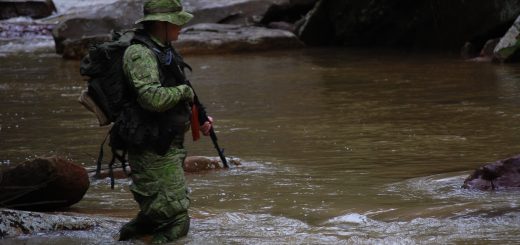A Comparison of Common Camo Under IR
As someone who is frequently broke, modern civilian camos that are proven to be IR compliant are simply out of budget. Typically this is what will draw some in the market towards surplus camo, however a lot of this was not made with NIR compliance in mind. As a result, I thought it would be a good idea to do my own independent testing of some basic surplus camos that I had lying around. The following camo that was tested was as follows:
- Lockheed Martin F-35 tee shirt (what a topically humorous control group!)
- Tropentarn
- Alpenflage
- Flecktarn
- USGI OCP
- USGI M81 Woodland
- Greyshop Partizan SS tracksuit jacket
The Night vision used was a gen 3 Omni VII PVS-14 with a Low Light Innovations white phos filter to improve image clarity and the IR illuminator was the on-board with a standard PVS-14. Not only is this what I personally have but anything brighter at this close of a range would flood the image with way too much light for a visible distinction between the tested camo and the background that we are trying to blend into (poverty cope I know).
There will be two pictures of the camo, one with my friend wearing it with a woodland background, and one of the camo on really dry grass and dirt to show what a more dry brown environment would look like. It would have been much better to do it with really dry light brown soil but I couldn’t find any nearby.
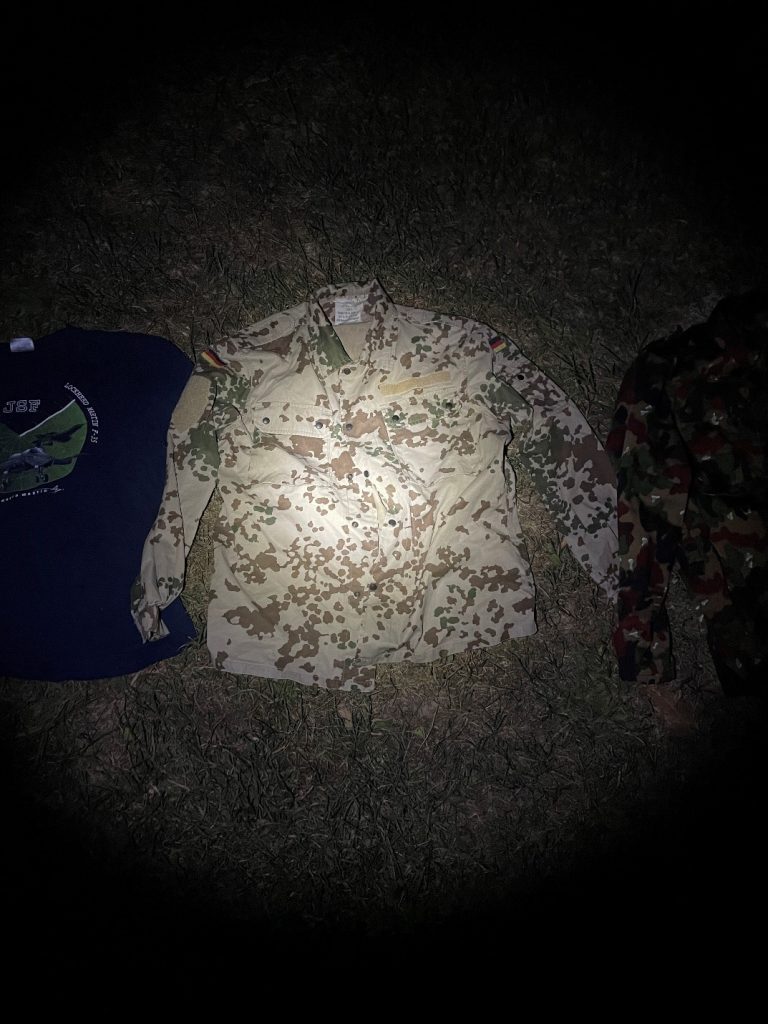
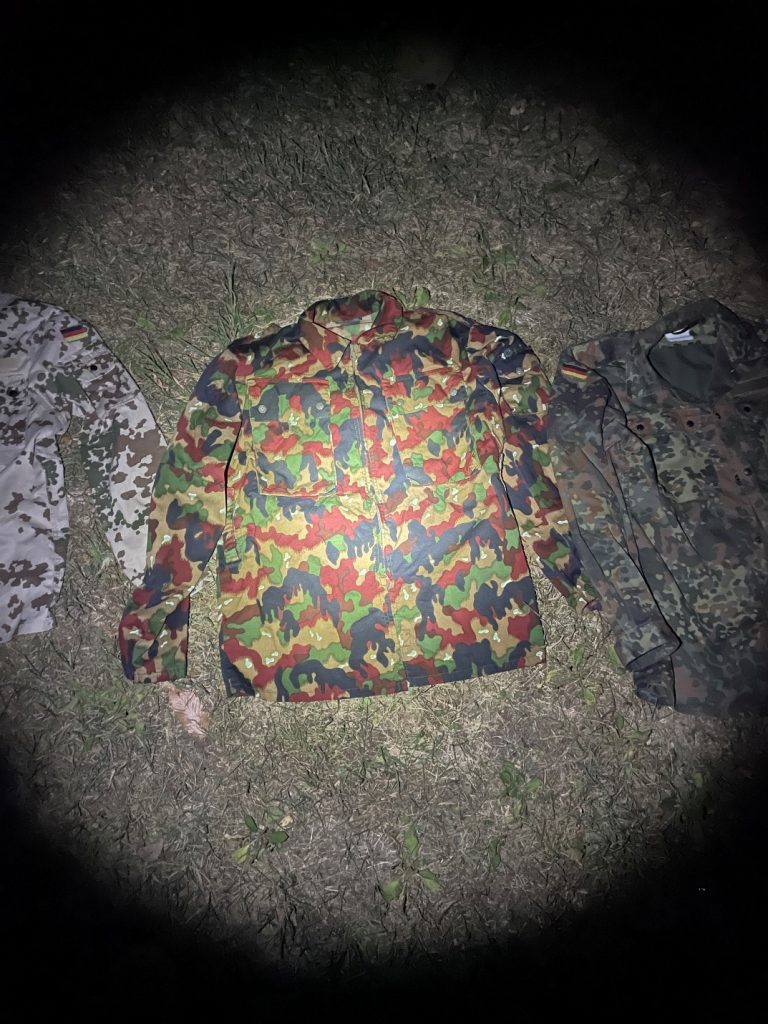
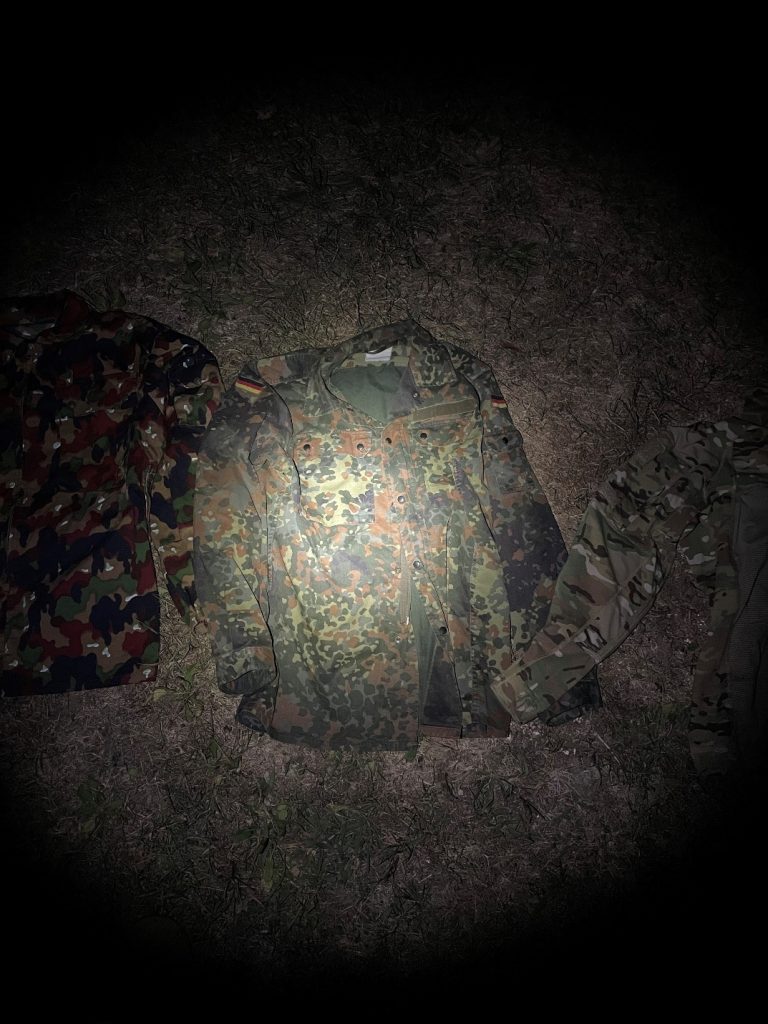
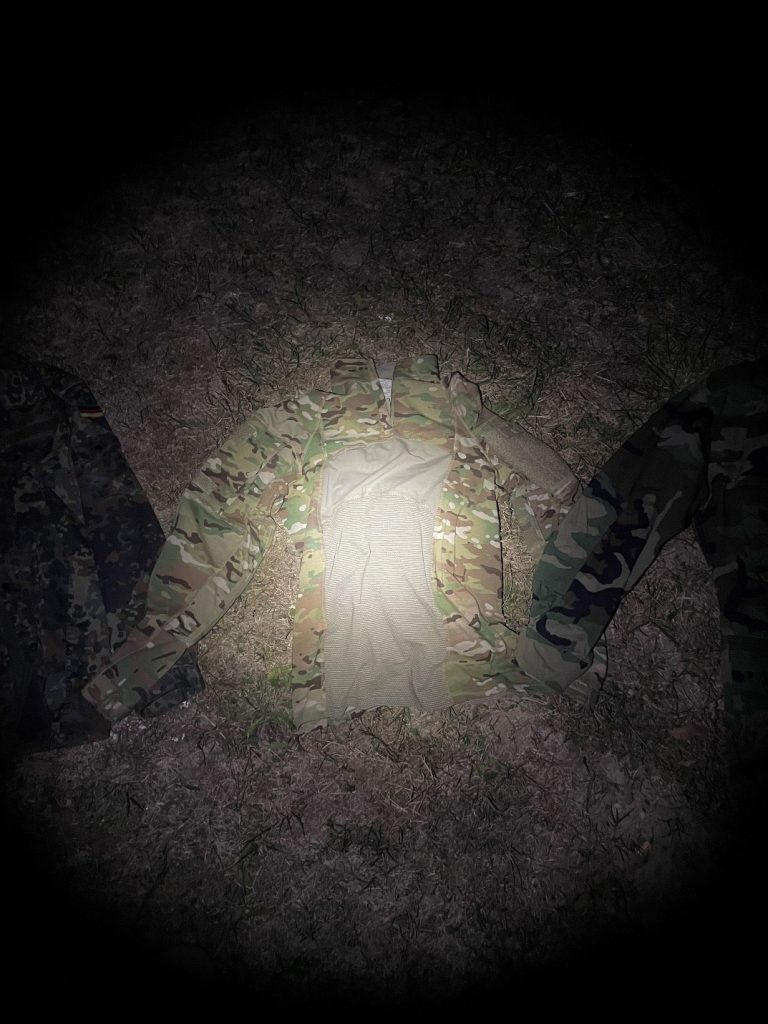
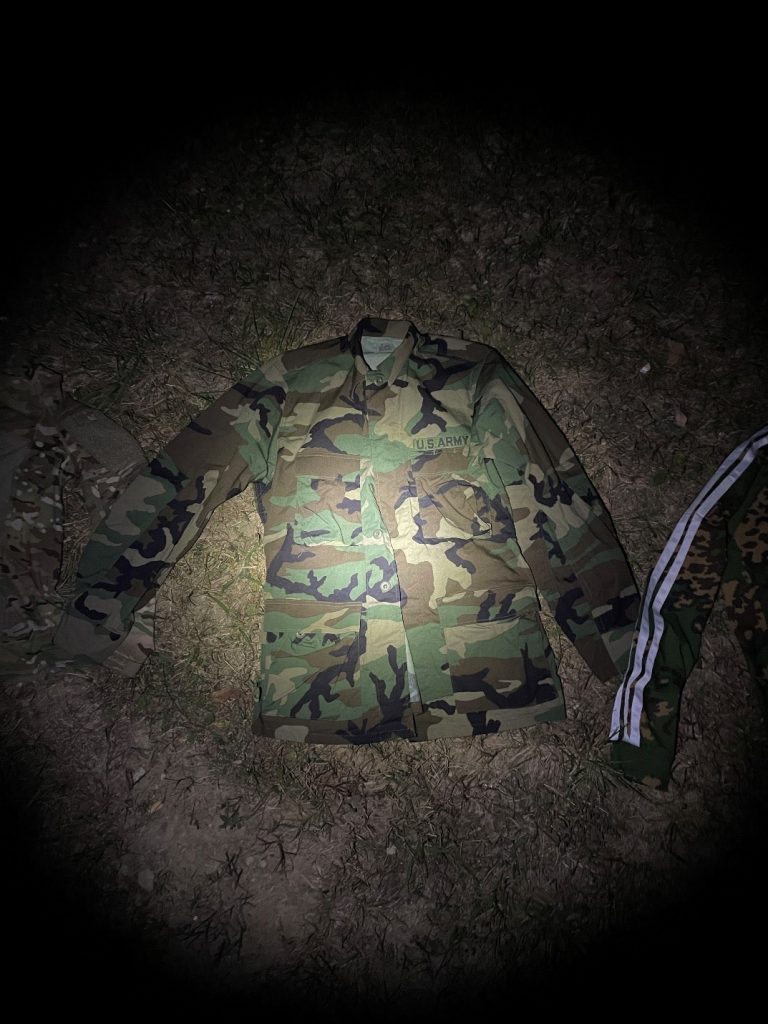
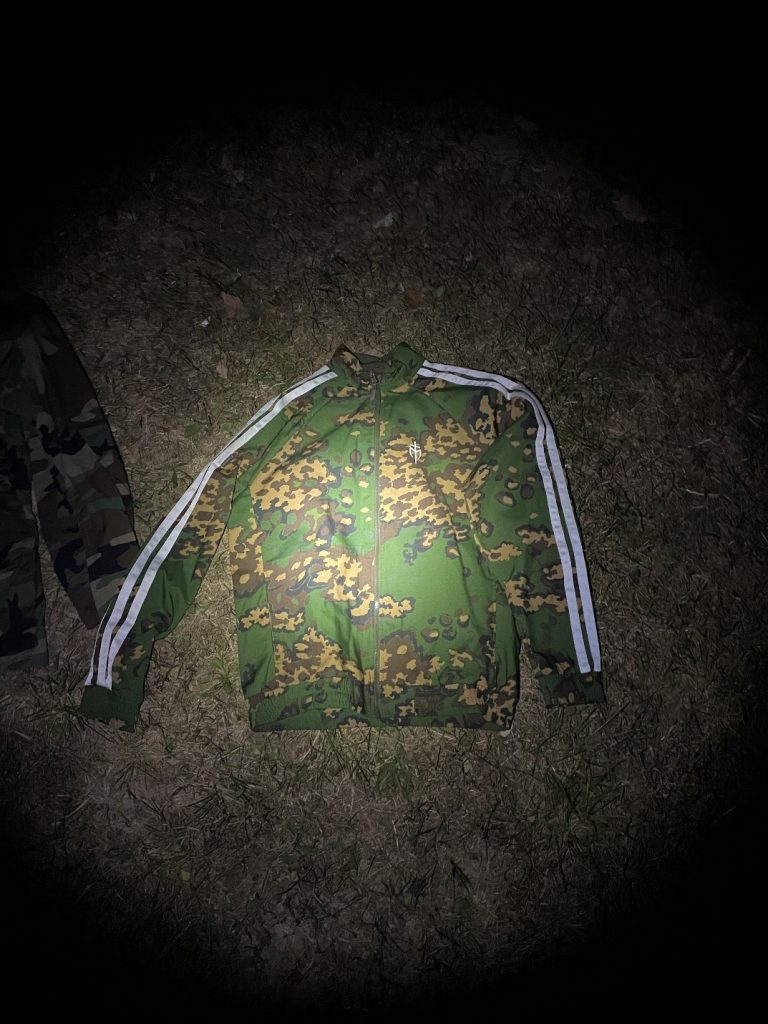

To start we will look at our control group which is the Lockheed Martin F-35 tee shirt. As we can see this shirt seems to have a very present IR Glow similar to that of Condor products. For example, I have a picture of the shirt next to a non-NIR compliant backpack. Unlike the real F-35, you won’t want to be doing stealth operations in this.
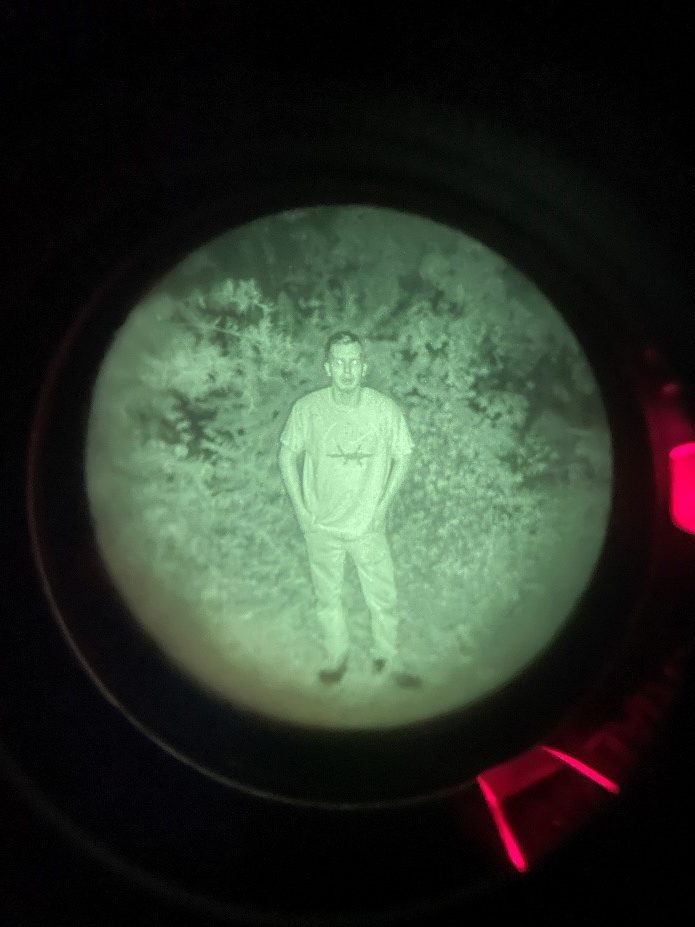
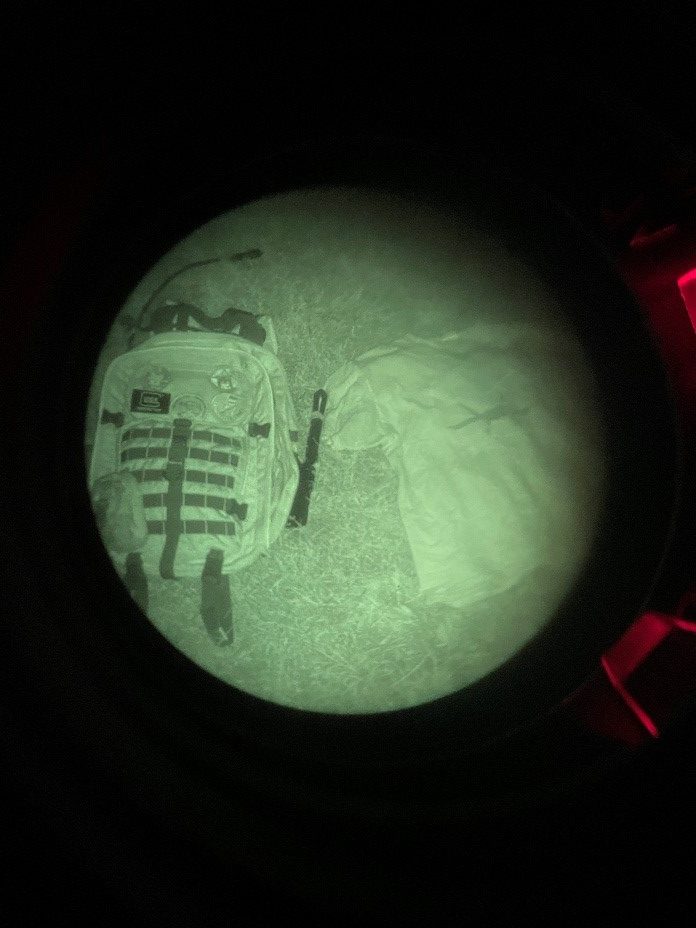
Our first real contender is going to be the Tropentarn camo. Tropentarn is a derivative of Flecktarn intended for use in arid regions. While the camo did appear quite bright compared to the backdrop of the dense woodland I don’t think it would be too bad in an environment that is more arid in nature such as what you may see in the western United States. There is some minor Velcro reflection, however it matches pretty well with the pattern itself so in my opinion it isn’t a huge deal. I would not use it in my locale for anything serious, but there exists some potential.
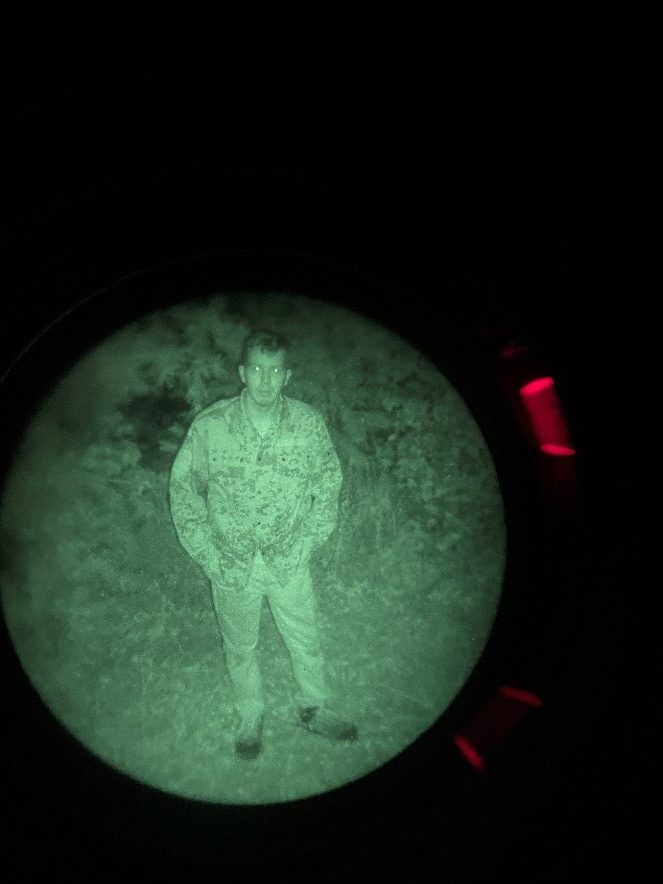
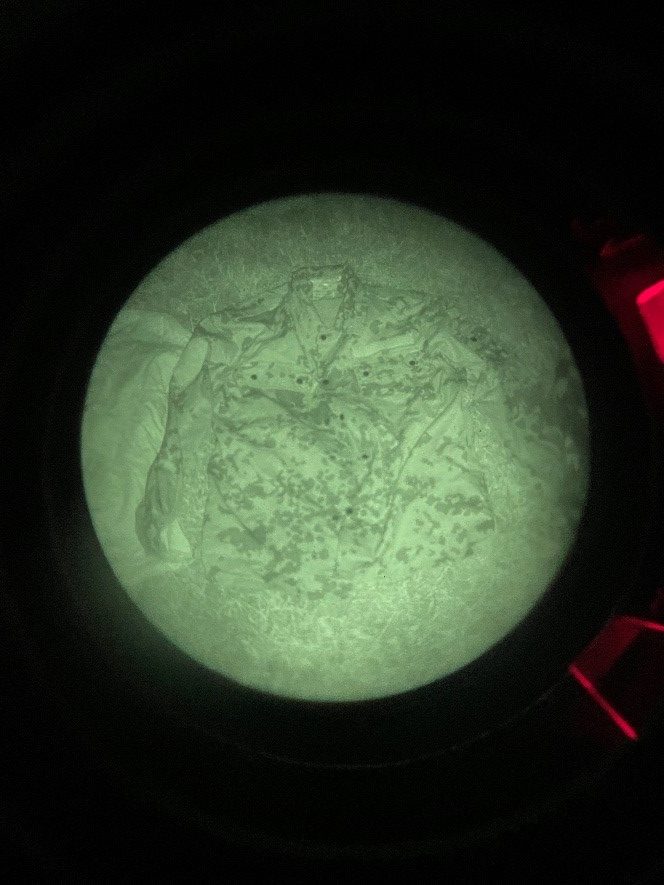
Next, we will look at some Alpenflage (TAZ 83), more specifically the M83 field shirt version. This camo works really well in my area during Fall specifically, however most other seasons it isn’t a great contender and in my opinion the night vision performance is lackluster. Specifically, the red splotches that the camo is so famous for really pop under IR. Perhaps there is potential for experimentation with a reactive dye that could possibly make it more efficient than it is currently, but as it stands it fares better as a cool fashion statement than it does a great night camo.
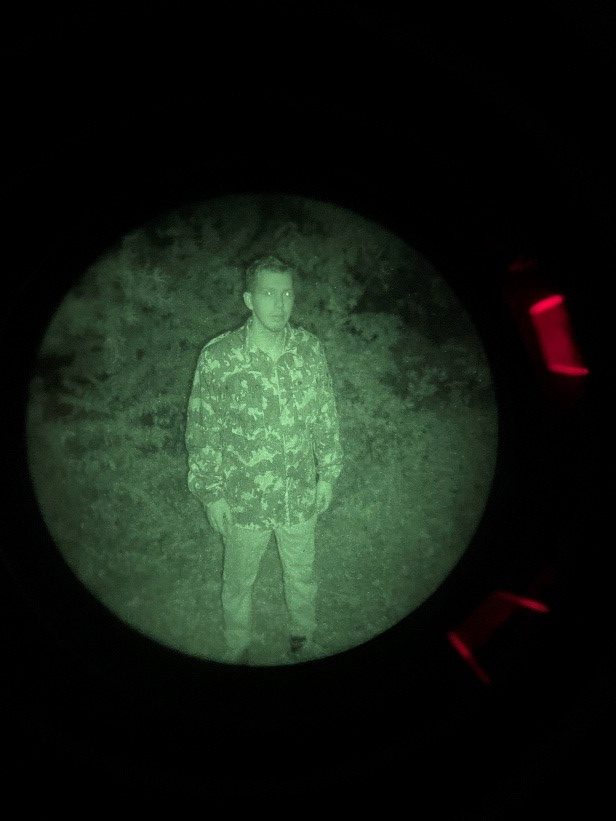
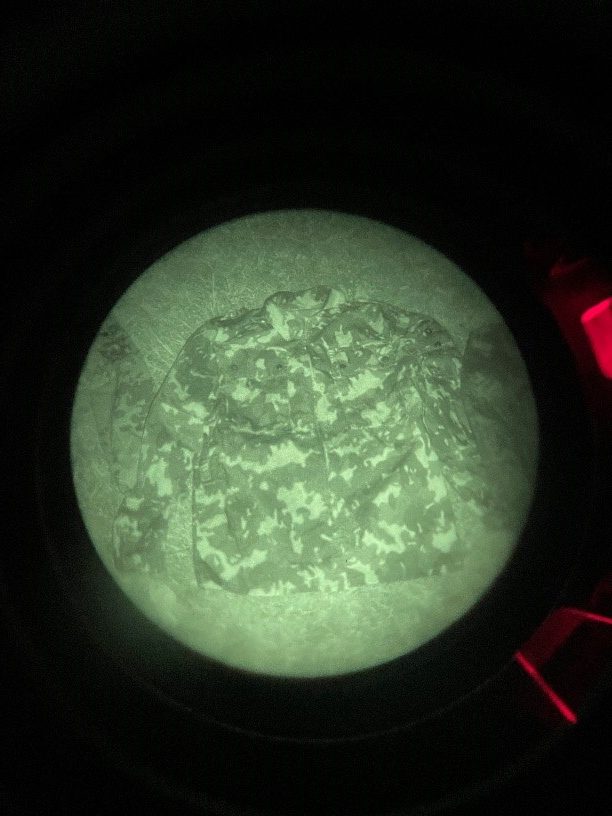
Now we arrive at Flecktarn. Admittedly I am a little biased. I love Flecktarn and it is easily the most prolific pattern that I have in my wardrobe. However, in my opinion, these results don’t lie. The background has little contrast to the Flecktarn field shirt and there is very little to no reflection visible with the exception of the glow from the nametag Velcro. This could certainly get you spotted but it can be avoided without permanent alteration of the garment by slapping a morale patch or name tag on it. However, that does seem to be a common issue among darker patterns as the contrast is higher between the Velcro and the camo itself which is what makes this issue not so apparent in the Tropentarn or OCP examples. Personally, it will likely be my go-to as it blends well with my surroundings in the daytime but the Velcro issue is something you should definitely think about when making this decision.


Now, into the United States camo. This stuff will be some of the easiest to find in the States due to recent changes in camo patterns causing a large amount of surplus, as well as some garments finding themselves “lost” from the base. To start with we will be looking at OCP. This is a real US Army issue OCP combat shirt that was given to me as a gift by a friend who is currently serving and I have to say that so far, it’s performing well. It’s not necessarily great for my particular woodland environment but I would say that it’s an equal contender with the Tropentarn. It suffers the same patch reflection issue as the Flecktarn, but the Velcro is much larger in this shirt so that would need to be covered up. It’s still not a bad pick for some nice cheap breathable kit.
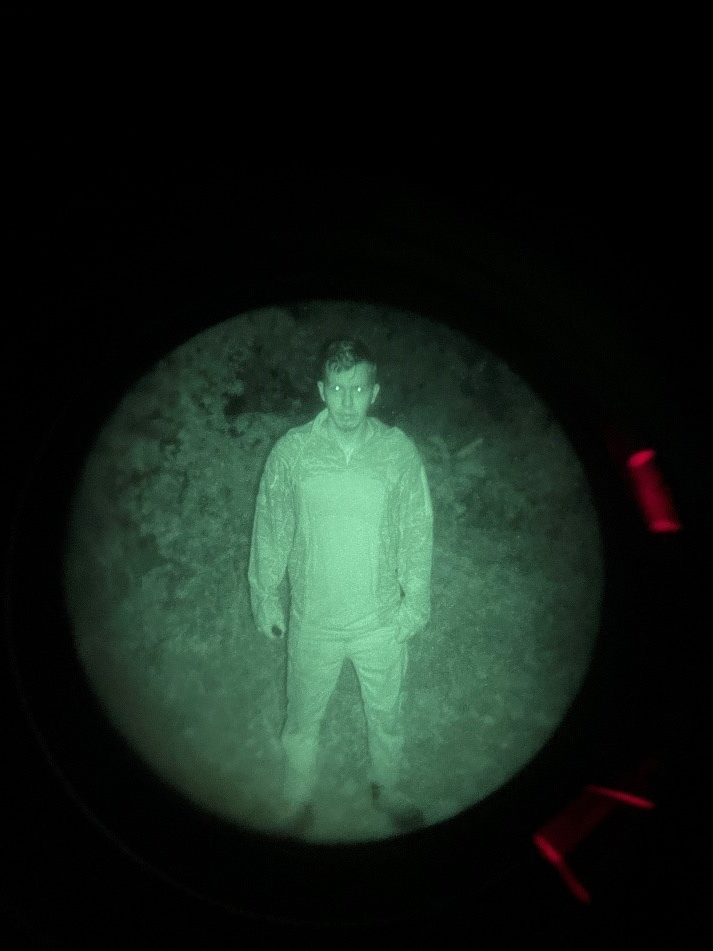

And now we will discuss God’s plaid, M81 woodland. This pattern is extremely prolific and easy to find as it is seemingly the default when it comes to camo in the US. Everyone seems to own or knows someone who owns USGI M81. While it’s affordable and a great choice for most people, I have to say that the performance of this pattern was quite lackluster at night. The greens and browns really blend together into a virtually non-visible pattern that’s very bold and reflective besides the black parts. Honestly, it’s giving the Lockheed Martin tee shirt a run for its money for worst performance which I wasn’t sure was possible. For general daytime camo, I’d say it’s a great choice but I personally would not use it.
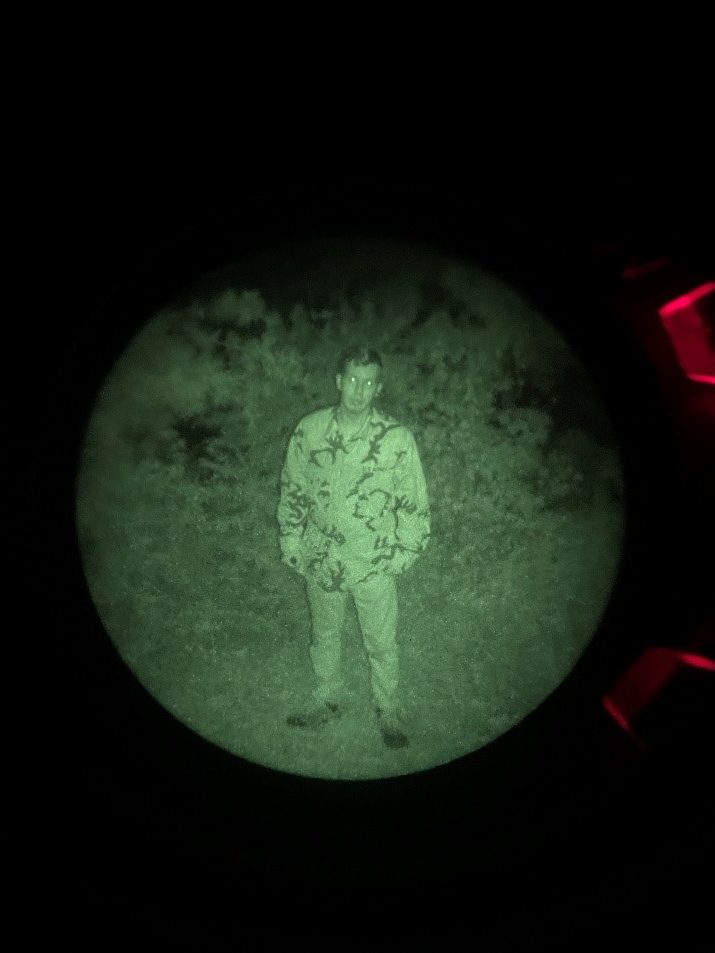
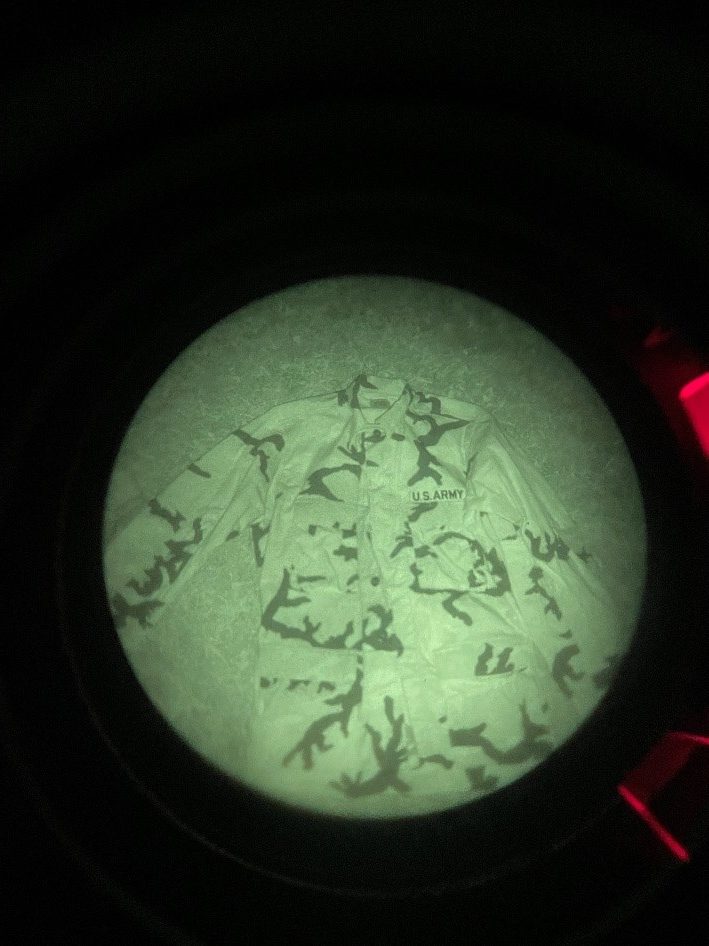
Finally, I have my “Gop-Tac” tracksuit that I basically bought for a meme. Literally, I was looking in my closet when grabbing various camos and thought “Eh why not” but shockingly the meme tracksuit made for airsoft works alright for whatever reason. I mean, it does reflect and it has giant reflective Adidas tri-stripes but still performs better than some variations of older issued camo. I still wouldn’t use it as it’s still airsoft gear. But if that’s all that you had, you truly could do worse. Basically, this is the Somogear of “Yeah bro it’s totally NIR-rated”.
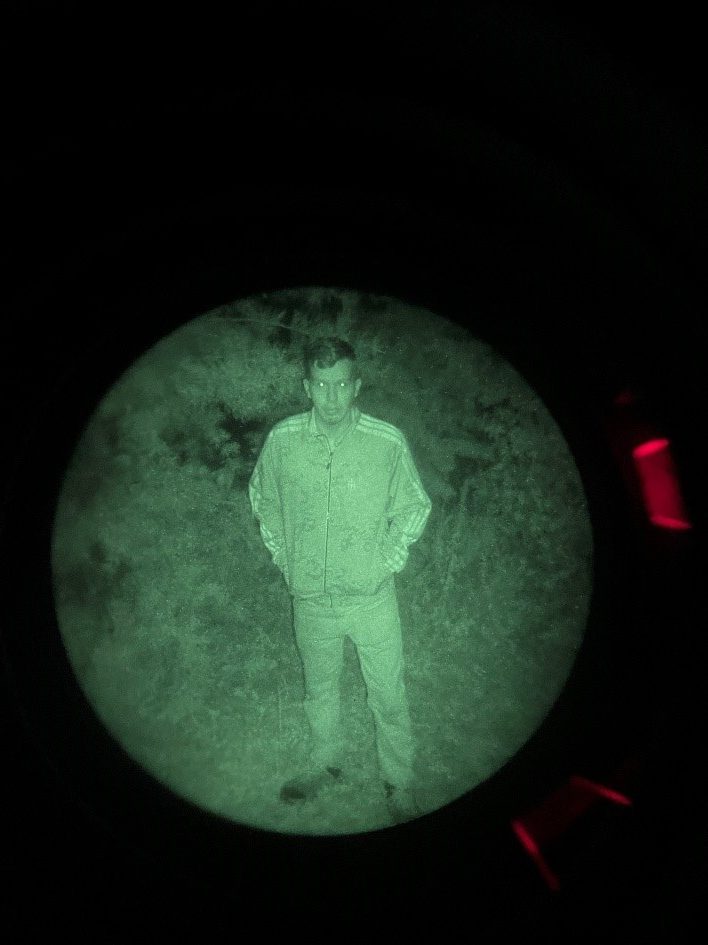
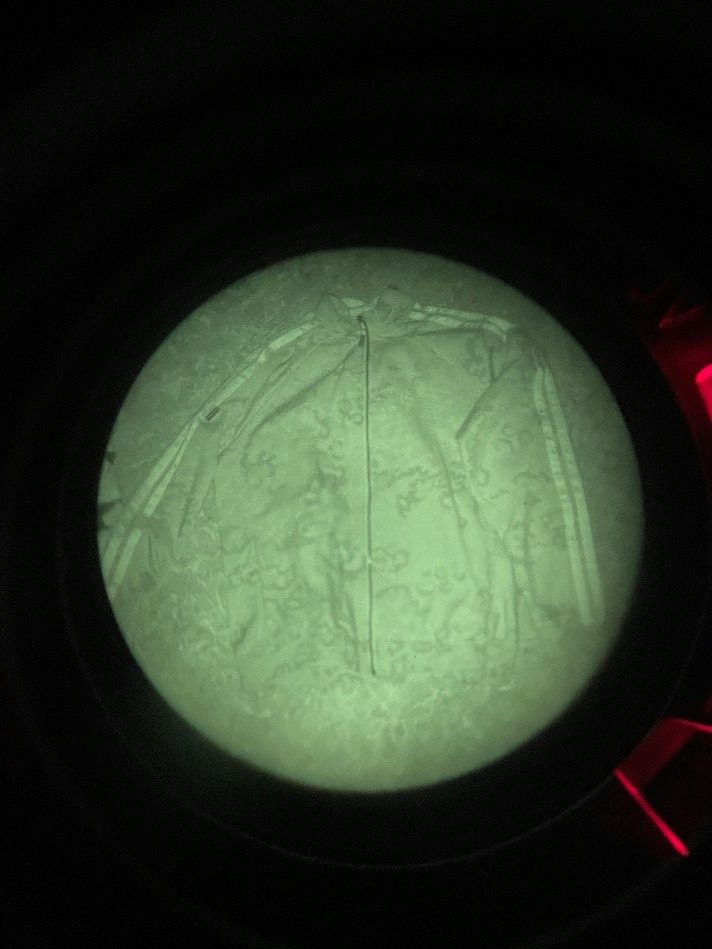
Best to worst in my opinion:
- Flecktarn
- OCP
- Tropentarn
- Alpenflage
- Partizan SS tracksuit
- M81 woodland
- Lockheed Martin tee shirt

